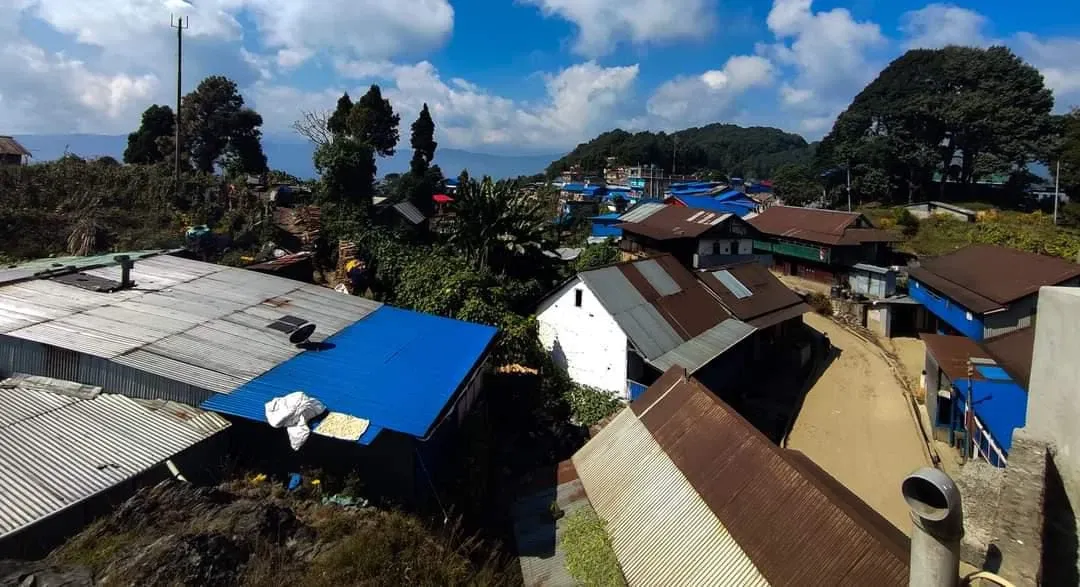Sankranti Bazaar in Athrai, Heritage Bazaar of Terathum, East Nepal
Synopsis: Sankranti Bazaar, located in Athrai, Terathum, Nepal, is a historic marketplace with over 200 years of history, deeply intertwined with the cultural and economic tapestry of the region. Situated on ancient trade routes connecting Nepal to Tibet and India, it showcases unique cultural heritage, traditional crafts, and cuisine. (alert-success)
 |
| Sankranti Bazaar |
S(caps)ankranti Bazaar, lied in the heart of Athrai in the Terathum district of Nepal, is not just a market; it's a living testament to history, culture, and resilience. Dating back over two centuries, this historic marketplace stands proudly on the ancient trade routes connecting Nepal with Tibet and India, contributing significantly to the economic and social fabric of the region.
Historical Roots
With a history spanning more than 200 years, Sankranti Bazaar has been a vital hub on the trade routes that linked Nepal to Tibet and India. This strategic location played a pivotal role in shaping the economic and social development of the Terathum district.
Cultural Significance
The name "Sankranti" draws inspiration from the Hindu festival of Makar Sankranti, a celebration that occurs every January. The market, however, celebrates Sankranti every day with its unique blend of culture and commerce. Renowned for its locally crafted textiles, jewelry, and handicrafts, the market is a treasure trove of artistic expression.
Culinary Delights
Sankranti Bazaar tantalizes not only with its craftsmanship but also with its traditional cuisine. From the rustic "kodo ko roti" (millets flatbread) to the tangy "gundruk" (fermented leafy vegetables) and the sweet "sel roti" (rice flour donut), the market offers a sensory feast for visitors.
Architectural Charm
Wandering through Sankranti Bazaar feels like stepping into a bygone era. The market's unique architecture, characterized by narrow alleys, mud and stone buildings, and wooden structures, tells stories of centuries past. Set against a backdrop of high mountains and lush forests, the market is not just a commercial space but a picturesque cultural heritage site.
Trade Hub and Exploration
In its heyday, Sankranti Bazaar was a bustling center for salt trade, a vital commodity for the Himalayan region's inhabitants. Notably, famous explorers like Francis Buchanan-Hamilton traversed its alleys in the early 19th century, adding to the market's historical significance.
Challenges Overcome
Sankranti Bazaar's journey hasn't been without challenges. Natural disasters, political upheavals, and economic shifts have tested its resilience. The advent of e-commerce and online shopping has posed new challenges, altering the market's traditional dynamics. The demographic shift, with younger generations showing less interest in traditional occupations, adds to the evolving narrative.
Cultural Mosaic and Traditional Occupations
Despite these challenges, Sankranti Bazaar remains a melting pot of cultures. It hosts a diverse population, including Limbu, Rai, Tamang, and Newar communities. The traditional occupations of agriculture, animal husbandry, and handicrafts still sustain many families. Farming and animal husbandry coexist with the production of traditional handicrafts like woolen shawls, blankets, and baskets.
Political Significance
The market has not merely been a commercial hub but a site of political movements. During the Panchayat regime, Sankranti Bazaar played a pivotal role in the democracy movement in the early 1990s. Locals actively participated in rallies and protests against authoritarian rule, showcasing the market's role beyond commerce.
Festivals and Cultural Events
Sankranti Bazaar comes alive during festivals like the Sankranti Mela, a vibrant three-day celebration held in January. This cultural extravaganza brings together people from various communities, featuring traditional dances, music, and a delightful array of local cuisines.
Modernization and Preservation
In recent years, modernization has touched Sankranti Bazaar with the construction of new buildings and roads. However, conscious efforts have been made to preserve its unique cultural heritage and traditional architecture. The local government actively supports initiatives to promote tourism in the region, with Sankranti Bazaar standing as a key attraction.
Conclusion
In conclusion, Sankranti Bazaar isn't merely a market; it's a living narrative of history, culture, and resilience. Its architectural charm, traditional crafts, and festivals make it a captivating destination for both tourists and researchers interested in unraveling the intricate social and economic dynamics of traditional markets in Nepal.
Despite facing challenges like natural disasters and modernization, the bazaar remains a vibrant community hub, celebrating its diverse cultures and traditions through festivals and daily commerce, while efforts are made to preserve its historic architecture and essence.(alert-passed)

